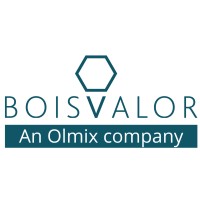Olmix Group analysed the impact and advantages of specific strategies to improve soil structure and plant nutrition through a technical seminar on-field in the region of Vrancea (Romania) along with CerealTop.
Olmix Group and its partner CerealTop, succeeded to organize a technical seminar in the region of Vrancea in Romania, where more than 45 farmers and producers from the southeastern side of the country put in common strategies, updates and a great diversity of contexts and situations concerning the soil management.
Held directly “on-field” within a real soil profile, the workshop allowed Olmix’s experts to focus on issues such as soil dysfunctions and how to stimulate crop production. As explained over the day, the new challenge of agricultural production requires producers to bet on new sustainable strategies that respect the environment but also that give them results.
In this context, Olmix has precisely developed several programmes to boost biological activities within the soil in a respectful way through specific technology.
Mineralization of organic matter
“The goal is to increase the solicitation of the soil’s microbial activity. Only that will give us a proper mineralization context. This process involves the transformation of organic matter such as crop residues, animal waste and organic fertilizers. For this to happen, there are two main microflora: first, microflora in charge of decomposition and, secondly, microfora in charge of assimilation in the rhizosphere,” Mr Benoit Le Rumeur, Technical Support Manager Plant Care, said at the event.
To boost the mineralization, it is necessary for the microflora to synthesize the enzymes needed for the transformation of the organic matter involved in this chain. Providing a mineral balance is essential for a correct biological reaction within the soil.

presentation on-field.
“Mineral Inducer Process (MIP) is the name of the technology that Olmix Plant Care has come up through research on field. It relies on using bioactive properties of specific minerals and micronutrients to stimulate the biological reactions of plant and soil microflora. It is widely known that specific minerals are useful for the enzymatic activities and also necessary for the solubilization of mineral elements,” the expert explained.
Olmix’s MIP technology provides the mineral balance necessary for the two microflora:
- Microflora for decomposition: it leads to a fast decomposition of the fermentable compounds of organic matters and to the release of the soluble minerals in the soil solution.
- Microflora for assimilation: it leads to the production of complex molecules for the absorption of minerals and to the stimulation of the root growth.
The importance of soil’s fertility
The second part of the seminar highlighted the importance of soil’s fertility, which is also directly correlated to the amount of biological activity to be found in the soil.
“First, we should focus on solving soil degradation problems and then on stimulating the natural microflora. If we succeed, we’ll be able to preserve soil’s integrity and make the most of its potential. It is of utmost importance that we activate the humification processes since that will sustainably strengthen soil fertility and its resilience to disturbance.”
Then, Mr Le Rumeur showed some particularities of what Olmix’s experts consider to be the best strategy to tackle this issue, which is no other than using a microbial biomass activator with specific properties:
“Under the influence of intensive operations, the amount of humus in the soil gradually decreases. There are many consequences: compaction, erosion, rooting of more superficial crops and therefore greater sensitivity to climatic hazards. That’s why here we’ve got to use a soil fertility activator. In this case, Olmix’s solution Neosol stimulates the production of humus in the soil in order to restore a fertile environment conducive to the development of roots. The active substances of MIP technology contained in Neosol provide the necessary minerals for the soil microflora to synthesize the enzymes needed for transformation of organic matter,” he said.
The technical day closed with a comparative between a classical soil profile and a second profile where Olmix’s technology was used, concretely a biostimulant fertilizer, which led later to a fruitful exchange of thoughts and opinions among attendees.

presentation on-field.




